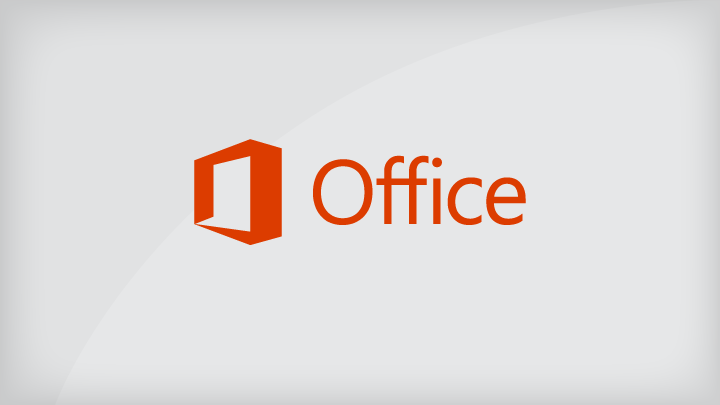Navigating the Exchange Migration: A Journey from 2013 to 2019
December 13, 2024, 10:52 pm
In the world of technology, change is the only constant. For organizations relying on Microsoft Exchange, the transition from Exchange 2013 to Exchange 2019 was not just an upgrade; it was a monumental task. This migration journey, spanning over a year, involved meticulous planning, execution, and troubleshooting.
Imagine a bustling city undergoing a major renovation. Roads are closed, detours are set, and the old structures are torn down to make way for the new. This is akin to the migration process. It requires careful navigation to ensure that the daily operations continue smoothly while the transformation takes place.
The first step in this migration saga was the preparation phase. Just as a city planner assesses the existing infrastructure, IT teams evaluated their current Exchange setup. The decision to upgrade was not taken lightly. It involved analyzing the benefits of new features, improved security, and enhanced performance. The goal was clear: to modernize the email system without disrupting the flow of communication.
The groundwork began with the introduction of new domain controllers. Think of these as the new traffic lights in our city. They needed to be installed and configured before the old ones could be removed. The process involved deploying Windows Server 2019, ensuring that Active Directory (AD) was ready to support the new Exchange environment. The IT team ran diagnostics to confirm that everything was functioning correctly. This was akin to a safety inspection before opening a new road to traffic.
Next came the installation of Exchange 2019 servers. This step was like laying down the foundation of a new skyscraper. It required the installation of necessary components, such as the .NET Framework and Unified Communications Managed API. Each server was meticulously configured to ensure compatibility with existing systems. The team enabled MAPI over HTTP, a crucial protocol for modern email communication, replacing the outdated RPC over HTTP.
Once the new servers were in place, the focus shifted to the migration of mailboxes. This was the heart of the operation. Mailboxes are the lifeblood of any Exchange environment, and moving them required precision. The team created move requests for each mailbox, ensuring that no data was lost in transit. Monitoring tools were employed to track the progress, much like a construction manager overseeing the building process.
However, the migration was not without its challenges. Errors cropped up, akin to unexpected roadblocks during construction. Sometimes, users found themselves unable to connect to their mailboxes post-migration. The solution? A simple restart of the MSExchangeAutoDiscoveryAppPool. This was a reminder that in technology, as in life, sometimes the simplest solutions are the most effective.
As the migration progressed, the old Exchange 2013 servers were gradually decommissioned. This step was like tearing down the old buildings once the new ones were ready for occupancy. The team ensured that all data was successfully migrated before shutting down the old servers. This process involved removing mailbox databases and confirming that all services were functioning on the new servers.
With the old infrastructure dismantled, attention turned to the Edge servers. These servers act as the gatekeepers of the email system, managing external communications. The migration involved removing the old Edge servers from the DNS and introducing the new ones. This step was crucial to ensure that email flow remained uninterrupted. The team meticulously followed the steps to create new Edge subscriptions and configure the necessary settings.
Throughout this journey, communication was key. Just as a city planner keeps the public informed about construction timelines, the IT team kept stakeholders updated on the migration progress. Regular check-ins ensured that everyone was aware of potential disruptions and the timeline for completion.
Finally, after months of hard work, the migration was complete. The new Exchange 2019 environment was fully operational, and the benefits were clear. Users experienced improved performance, enhanced security features, and a more robust email system. The transition was a success, much like a city unveiling its new skyline after a long renovation.
In conclusion, the migration from Exchange 2013 to 2019 was a complex journey filled with challenges and triumphs. It required careful planning, execution, and a commitment to maintaining communication throughout the process. As organizations continue to evolve, this migration serves as a reminder of the importance of adaptability in the face of change. Just as cities must grow and change to meet the needs of their inhabitants, so too must technology evolve to support the demands of modern communication. The road ahead may be paved with challenges, but with careful navigation, the destination is worth the journey.
Imagine a bustling city undergoing a major renovation. Roads are closed, detours are set, and the old structures are torn down to make way for the new. This is akin to the migration process. It requires careful navigation to ensure that the daily operations continue smoothly while the transformation takes place.
The first step in this migration saga was the preparation phase. Just as a city planner assesses the existing infrastructure, IT teams evaluated their current Exchange setup. The decision to upgrade was not taken lightly. It involved analyzing the benefits of new features, improved security, and enhanced performance. The goal was clear: to modernize the email system without disrupting the flow of communication.
The groundwork began with the introduction of new domain controllers. Think of these as the new traffic lights in our city. They needed to be installed and configured before the old ones could be removed. The process involved deploying Windows Server 2019, ensuring that Active Directory (AD) was ready to support the new Exchange environment. The IT team ran diagnostics to confirm that everything was functioning correctly. This was akin to a safety inspection before opening a new road to traffic.
Next came the installation of Exchange 2019 servers. This step was like laying down the foundation of a new skyscraper. It required the installation of necessary components, such as the .NET Framework and Unified Communications Managed API. Each server was meticulously configured to ensure compatibility with existing systems. The team enabled MAPI over HTTP, a crucial protocol for modern email communication, replacing the outdated RPC over HTTP.
Once the new servers were in place, the focus shifted to the migration of mailboxes. This was the heart of the operation. Mailboxes are the lifeblood of any Exchange environment, and moving them required precision. The team created move requests for each mailbox, ensuring that no data was lost in transit. Monitoring tools were employed to track the progress, much like a construction manager overseeing the building process.
However, the migration was not without its challenges. Errors cropped up, akin to unexpected roadblocks during construction. Sometimes, users found themselves unable to connect to their mailboxes post-migration. The solution? A simple restart of the MSExchangeAutoDiscoveryAppPool. This was a reminder that in technology, as in life, sometimes the simplest solutions are the most effective.
As the migration progressed, the old Exchange 2013 servers were gradually decommissioned. This step was like tearing down the old buildings once the new ones were ready for occupancy. The team ensured that all data was successfully migrated before shutting down the old servers. This process involved removing mailbox databases and confirming that all services were functioning on the new servers.
With the old infrastructure dismantled, attention turned to the Edge servers. These servers act as the gatekeepers of the email system, managing external communications. The migration involved removing the old Edge servers from the DNS and introducing the new ones. This step was crucial to ensure that email flow remained uninterrupted. The team meticulously followed the steps to create new Edge subscriptions and configure the necessary settings.
Throughout this journey, communication was key. Just as a city planner keeps the public informed about construction timelines, the IT team kept stakeholders updated on the migration progress. Regular check-ins ensured that everyone was aware of potential disruptions and the timeline for completion.
Finally, after months of hard work, the migration was complete. The new Exchange 2019 environment was fully operational, and the benefits were clear. Users experienced improved performance, enhanced security features, and a more robust email system. The transition was a success, much like a city unveiling its new skyline after a long renovation.
In conclusion, the migration from Exchange 2013 to 2019 was a complex journey filled with challenges and triumphs. It required careful planning, execution, and a commitment to maintaining communication throughout the process. As organizations continue to evolve, this migration serves as a reminder of the importance of adaptability in the face of change. Just as cities must grow and change to meet the needs of their inhabitants, so too must technology evolve to support the demands of modern communication. The road ahead may be paved with challenges, but with careful navigation, the destination is worth the journey.

